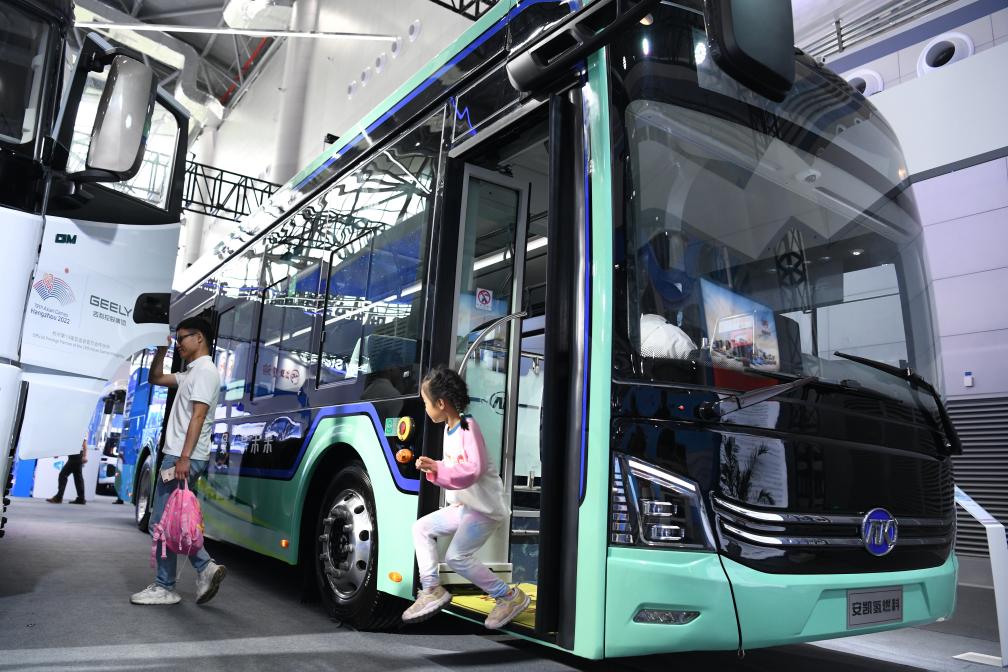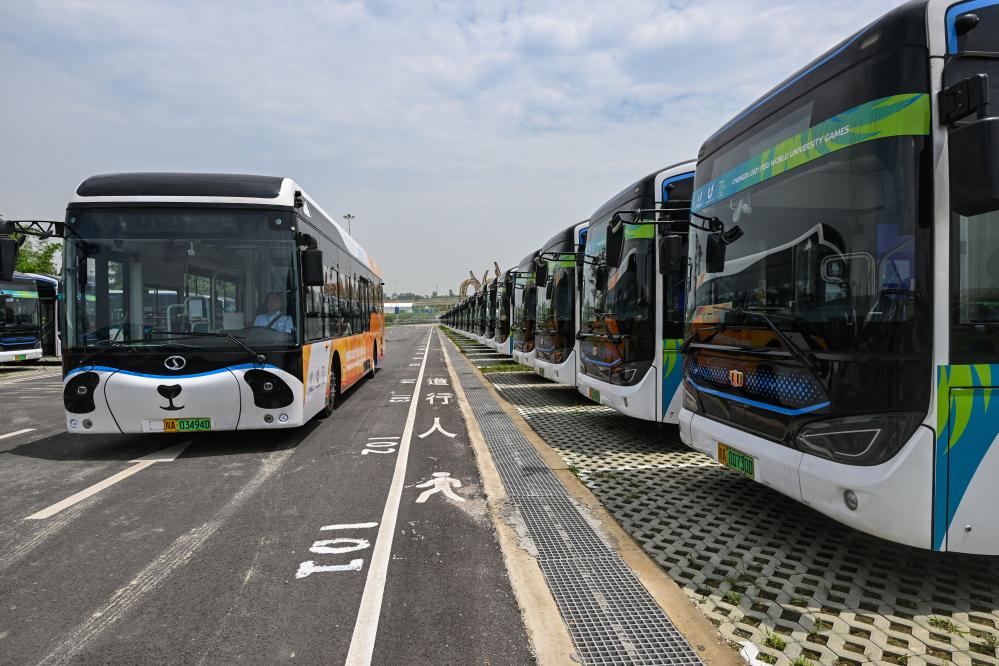Fifteen cities have been approved for pilot projects, and the full electrification of vehicles in the public sector has accelerated the development of new energy vehicles.
Xinhua News Agency, Beijing, November 16th Title: 15 cities have been approved for pilot projects, and the full electrification of vehicles in the public sector has contributed to the development of new energy vehicles.
Xinhua News Agency reporters Zhang Xinxin, Huang Xing and Zhao Dandan
Eight departments, including the Ministry of Industry and Information Technology, recently issued a notice to launch a pilot project of comprehensive electrification of vehicles in the public domain in 15 cities including Beijing, Shenzhen, Chongqing, Changchun and Yinchuan, encouraging exploration and forming a number of experiences and models that can be replicated and promoted.
With the opening of the pilot project in the pioneer area, the development of new energy automobile industry has once again attracted attention from all walks of life. What does this pilot mean? Why choose these 15 cities? What changes will be brought to the market and industry by promoting the full electrification of vehicles in the public sector? The reporter conducted an interview on this.
Taking the public sphere as a breakthrough to accelerate industrial upgrading
Vehicles in the public domain include city buses, sanitation vehicles, taxis, postal express vehicles, etc. In recent years, China has been accelerating the electrification of vehicles in the public domain. This time, it is clear that 15 cities will start pilot projects in the pioneering areas, which will further speed up the pace of electrification.
Why choose public domain vehicles? Industry experts believe that this is closely related to the existing structure of the industry and long-term development considerations.
Zhao Shijia, head of the Policy Planning Department of the Equipment Industry Development Center of the Ministry of Industry and Information Technology, told the reporter that the overall penetration rate of new energy vehicles in the public sector is about 10%, compared with the overall market penetration rate of new energy vehicles exceeding 30%, there is still much room. At the same time, vehicles in the public domain have a wide range and high frequency of use, which has a strong leading effect on the popularization of electrification cognition and application.
"Vehicles in the public domain have certain operational attributes and require high purchase and use costs, which will further force the industry to innovate." Zhang Yongwei, vice chairman of China Electric Vehicle committee of 100, said that the pilot project can not only effectively promote energy conservation and emission reduction, but also promote the exploration and application of new technologies, new models and new formats.
"China has long tried to electrify vehicles in the public domain, and buses are one of the earliest areas." Yang Zhongping, deputy secretary-general of China Association of Automobile Manufacturers, said that the electrification transformation of urban public transport system has greatly promoted the rapid layout and improvement of infrastructure. "The rapid networking of charging and replacing infrastructure will not only enhance convenience, but also provide support for the consumption of new energy vehicles in the private sector."
According to the expected target of the notice, the promotion of new energy vehicles focuses on official vehicles, city buses, sanitation vehicles, taxis and other fields, and the number of promotion is expected to exceed 600,000.

This is a hydrogen fuel city bus exhibited at the 2023 World Manufacturing Congress held in Hefei, Anhui Province (photo taken on September 21st). Xinhua News Agency reporter Zhang Duan photo
"Taking vehicles in the public sector as a breakthrough, on the one hand, it will promote green consumption and accelerate industrial upgrading, on the other hand, it will promote the deep integration of new energy vehicles with energy and transportation and improve the comprehensive competitiveness of the industry." Yang Zhongping said.

This is a new energy bus that is responsible for the traffic security of the 31st Summer Universiade in Chengdu. Xinhua News Agency reporter Damon photo
15 cities adapt to local conditions, and "urban belt" and "industrial cluster" are organically connected.
Combing the 15 pilot cities announced this time, we can find that there are both first-tier cities and second-and third-tier cities, which are distributed in the southeast and northwest.
"These 15 cities have their own characteristics. For example, Beijing’s industrial scale ranks in the forefront, Shenzhen is a highland for new technologies and new applications, and Yinchuan promotes the integration and development of green energy and new energy vehicles. " Yang Zhongping said that the arrangement of classification and differentiation can stimulate the creativity of cities and provide effective experiences and practices for the whole country.
In Changchun, white and green electric taxis are driving in the streets. The winter climate in Northeast China is cold. As a pilot city, Changchun is constantly exploring the charging and replacing modes.
Zhao Mingrui, director of the Changchun Municipal Bureau of Industry and Information Technology, told the reporter that in view of the climate characteristics in the alpine region, Changchun focused on promoting the application of power exchange mode and providing a super charging system for public charging infrastructure. "We are accelerating the implementation of the" Special Plan for Charging and Replacing Electric Vehicles in Changchun City ",and planning to build 50 power stations and 12,230 charging piles within three years."
The pilot cities and industrial clusters are organically combined to make the market and production more closely connected.
The relevant person in charge of the Chongqing Economic and Information Technology Commission said that Chongqing is accelerating the construction of a world-class intelligent networked new energy automobile industry cluster, and then a multi-dimensional policy support system will be established to promote the innovative application of new technologies and new models such as new charging and replacing technologies, vehicle-network interaction, autonomous driving and vehicle networking.
"We are stepping up the construction of a new energy vehicle R&D center, and continue to make efforts in terms of battery life improvement and cost reduction. We hope to seize the pilot opportunity in the pioneer area and speed up the layout of the commercial vehicle market." Zhou Guanghui, deputy general manager of Qingling Motor Co., Ltd. said.
Piloting in Ningbo, effectively connecting with the Yangtze River Delta industrial cluster; Pilot projects in Chengdu and Chongqing will better promote the development of new energy automobile industry in the west … … "The selected cities have a good industrial base. From parts to technology, from promotion quantity to task quantification, each pilot city is different, which is helpful to ‘ Urban belt ’ With ‘ Industrial cluster ’ Cohesion. " Yang Zhongping said.
Accelerate the exploration of new formats and stimulate a broader market.
Experts in the industry believe that in the long run, the pilot project in the pioneer area will accelerate the exploration of new formats, help consolidate and expand the advantages of the new energy automobile industry and broaden the development space.
Optimize the application environment. The pilot proposed that more than 700,000 charging piles and 0.78 million power stations will be built. "While promoting the construction of charging and replacing infrastructure in towns and villages along highways and suburbs, it will also speed up the construction of special charging and replacing power stations such as intercity fast charging networks and parking lots, as well as the construction of comprehensive energy service stations with functions such as charging and replacing electricity and refueling." Zhao Shijia said that the pilot will also explore the development of new service formats.
Improve the ecological system. "Compared with the private sector, it is more urgent to handle battery recycling because of the high frequency of use of vehicles in the public sector." Zhang Yongwei said that the popularization of electrification application will further force the innovation of business model and the development of technology for power battery recycling, which will promote the innovative management of battery life cycle.
"With the promotion of electrification of vehicles in the public domain, new formats including vehicle operators and energy service providers will also develop. All walks of life in the industry will also pay more attention to operations, applications and services, which is a good thing for the long-term development of the new energy automobile industry. " Yang Zhongping said.
The person in charge of car companies and industry experts interviewed by reporters suggested that local governments should introduce supporting policies, such as subsidizing vehicles in the public sector to buy electric vehicles and building piles and stations, and speeding up the process of vehicle electrification by increasing green financial support.